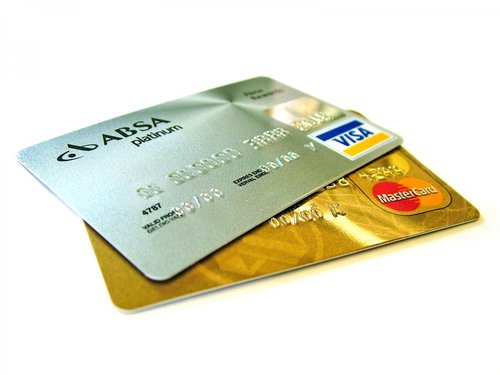
A FIELD GUIDE TO CREDIT
 Many consumers say they don’t understand credit. The truth is, cards and loans are all forms of debt. It’s easy to acquire too much debt or have problems paying it back.
Many consumers say they don’t understand credit. The truth is, cards and loans are all forms of debt. It’s easy to acquire too much debt or have problems paying it back.
Many debtors take on credit card “loans.” It’s easy to forget to make payments on time. It’s also relatively easy to get into financial trouble by borrowing too much by borrowing the maximum the card will allow.
Federal and private student loans are a popular way to finance a college education but it’s also quite simple to take out too many loans. Without a good job after graduation, it may be challenging to repay the loans as agreed.
If you’ve experienced bankruptcy, repossession, foreclosure, charge-offs, or defaults, you know how important it is to have good to excellent repayment history. If you have too much outstanding debt, consider debt consolidation. Before you make any decisions about your debts, let’s review the basic types of debt vehicles available to most U.S. consumers.
Credit Cards
Card loans allow you to borrow from the card issuer to pay for a product or service without using funds in a bank account. Each issuer, such as a bank, finance company, retail store, etc., establishes a monetary limit based on multiple factors. Your limit or line of credit is the maximum amount you may borrow. Most card loans are classified as unsecured debt. Of course, when you use the card to make purchases or get cash (not recommended), you must pay it back according the card agreement.
The way you use a card depends on how you use it. With so many card choices and offers for new cards available, it may be challenging to select the best one for your wallet:
Shop around. Compare card offers and decide what you want.
If you want a low annual percentage rate card (APR), you’ll need good credit scores to start.
If it makes sense to consolidate current card loans, look for card balance transfer cards with a low introductory APR. This kind of card loan can help you to pay back an existing card loan faster because you aren’t assessed high interest charges on the balance.
Look at secured cards to build your repayment history. Some secured cards offer opportunities for limit increases within six months. For instance, if you want a $1,000 limit, you send the card issuer $1,000. This payment secures the card loan and reduces the issuer’s risk. It’s up to you to pay bills as agreed and keep the account in good standing. You can’t access the security deposit on the card without closing the account in most cases.
According to CNBC at year-end 2016, the average U.S. household has $16,000 in card loans. That's a heavy debt burden for many.
Having cards in your wallet can tempt you to make impulse purchases. Don’t buy anything that you can’t afford to pay off in one or two months. Pay as much of the balance off every month and pay more than the minimum balance. Interest is assessed on your current balance. Carrying a balance on your card loans will increase how much you pay for the privilege of borrowing money.
Student Loans
U.S. consumers currently carry more than $1.3 trillion in student loan debt. The amount of student loan debt continues to grow. Although many students view student loans as a positive type of debt, it can be difficult for students to repay federal or private student loans after graduation.
Federal student loans don’t require the borrower to have a positive repayment history. It’s relatively easy for the student to take on too much debt because the federal government allows him or her to borrow. Some student loans are subsidized by the government. These loans are intended for students with financial need. The interest rates associated with these loans are lower than unsubsidized federal loans.
Unsubsidized loans are available to almost any student borrower. Costs and interest rates of unsubsidized loans are higher.
Interest on the borrowed student loan funds begins to accrue right away, but students and parents might not understand the facts about them. Although deferring the student loans and consolidating them can help to manage the amount the student and/or his or her parents owe later, it is challenging to repay student loans without sufficient financial resources after graduation.
Other Types of Debt
Mortgage loans, personal loans, and so-called interest-free shopping offers are other popular forms of consumer debt:
Mortgage loans are considered positive debt. A mortgage loan is a type of secured loan. The lender uses the value of the home to underwrite a mortgage loan. Most mortgage loans are repaid over 15 to 30-year periods. A home is the largest purchase most consumers make in a lifetime. Over time, the homeowner may enjoy increased equity growth. Mortgage interest on the home loan is deductible on the owner's tax return. Mortgage rates are near historic lows.
Personal loans may be written as unsecured or collateralized debt. If the borrower has a good repayment history, he or she may be approved for an unsecured loan. If he or she wants a larger personal loan, has too much debt or a poor repayment history, the lender may ask for collateral to lower perceived risks. A personal loan at an attractive APR can be used to consolidate high APR card loans or payday loans.
Interest-free shopping offers seem to be everywhere. Furniture sellers, online stores, and shopping channels offer "flexible payments" or "no money down." Read the fine print. For instance, if a furniture store claims you "pay nothing" for 24 months, the fine print may show that the purchase accrues interest on the purchase price until the first payment is due.
For more help in understanding debt and its consequences, call us! We are Georgia Debt Relief, specializing in assistance for people whose financial position has been compromised by debt. We want to see people get free of indebtedness and succeed in their financial future.